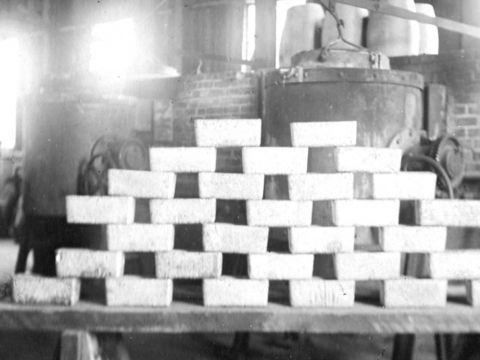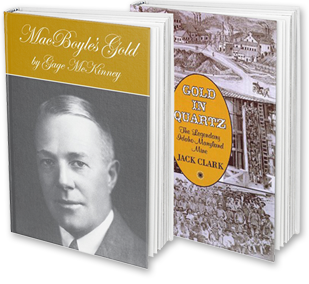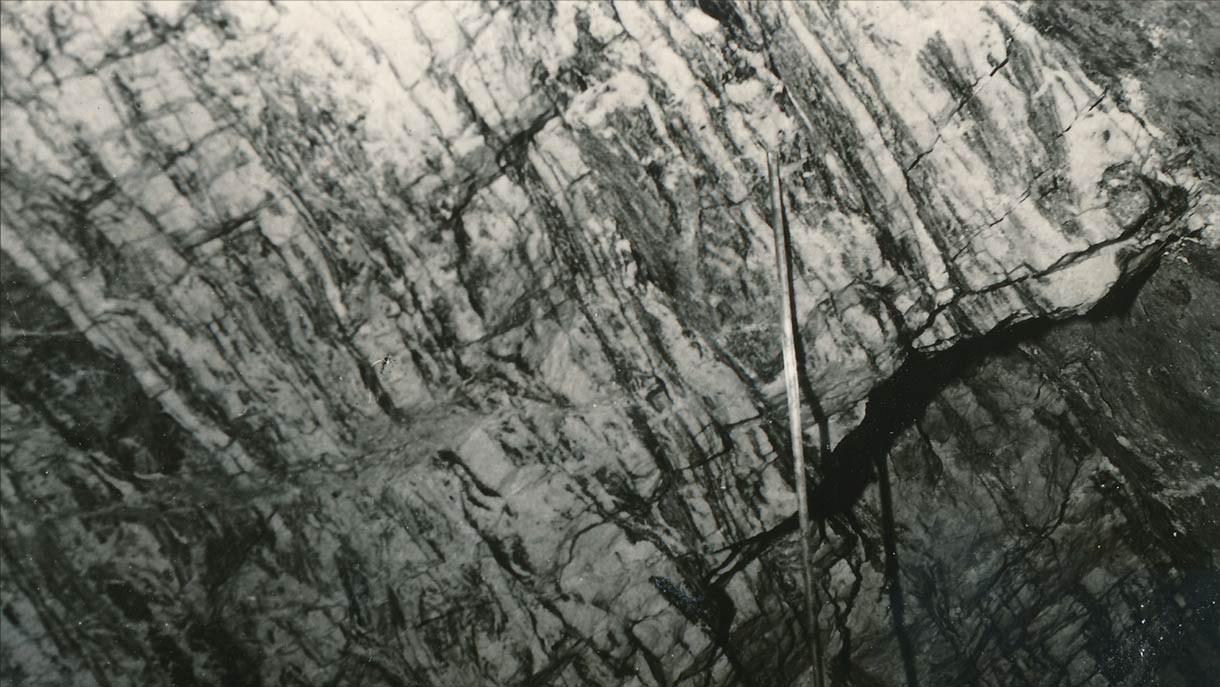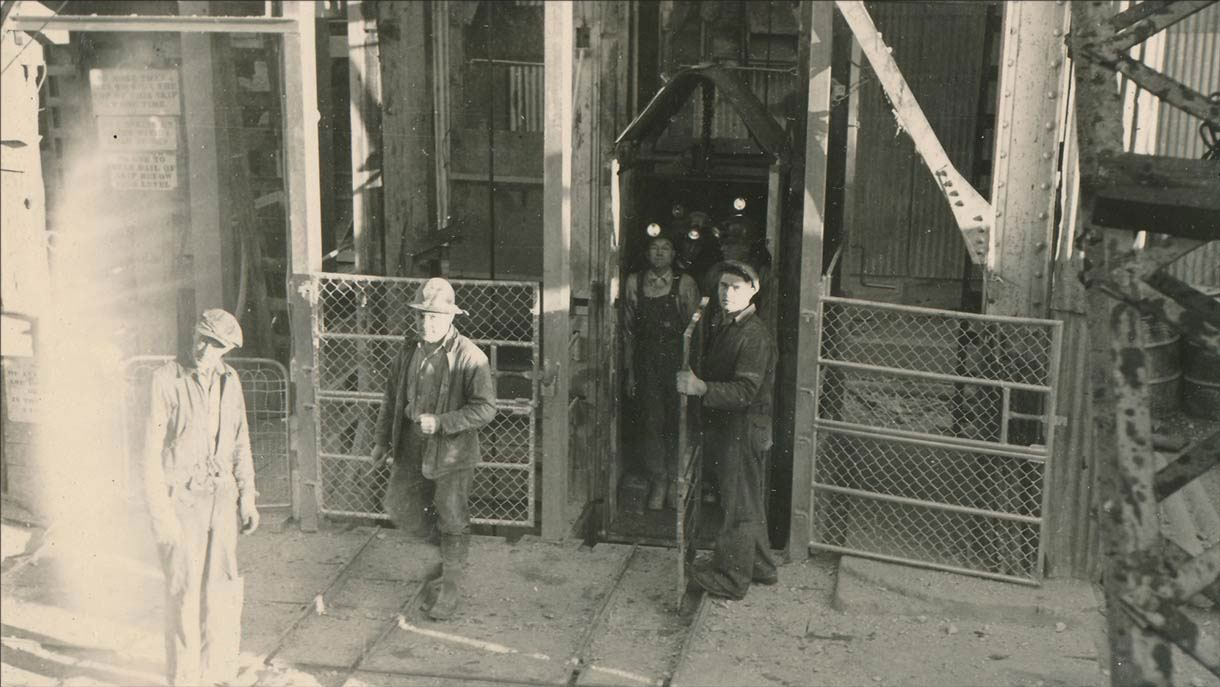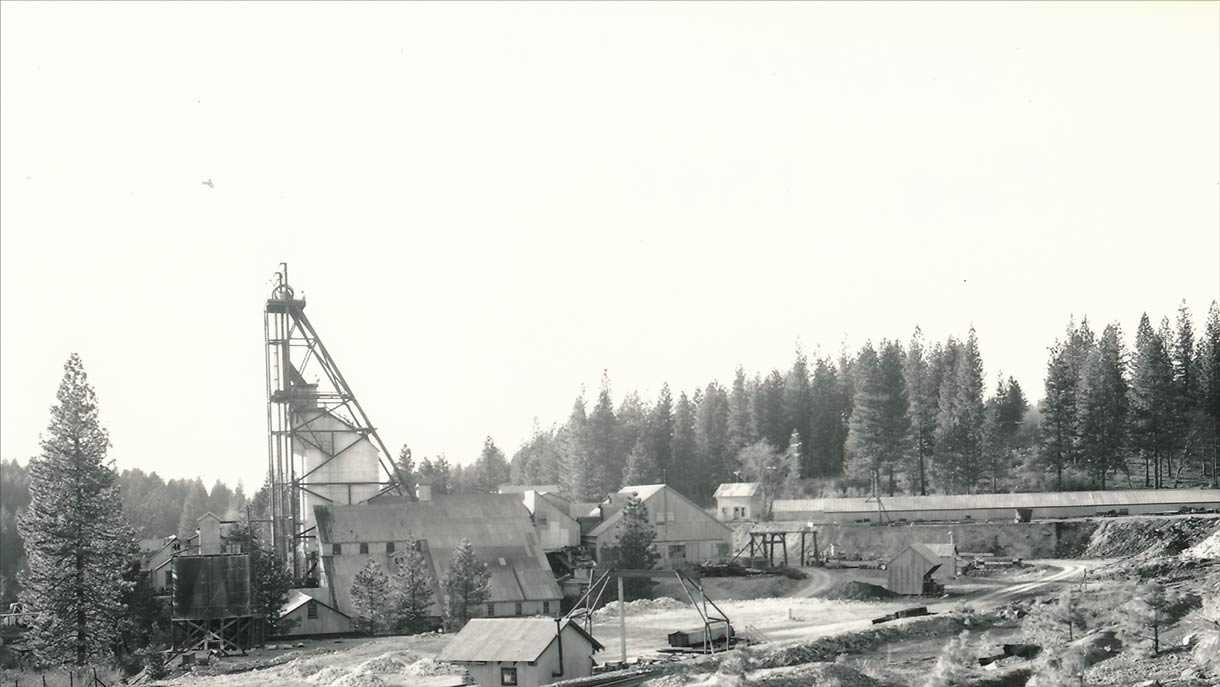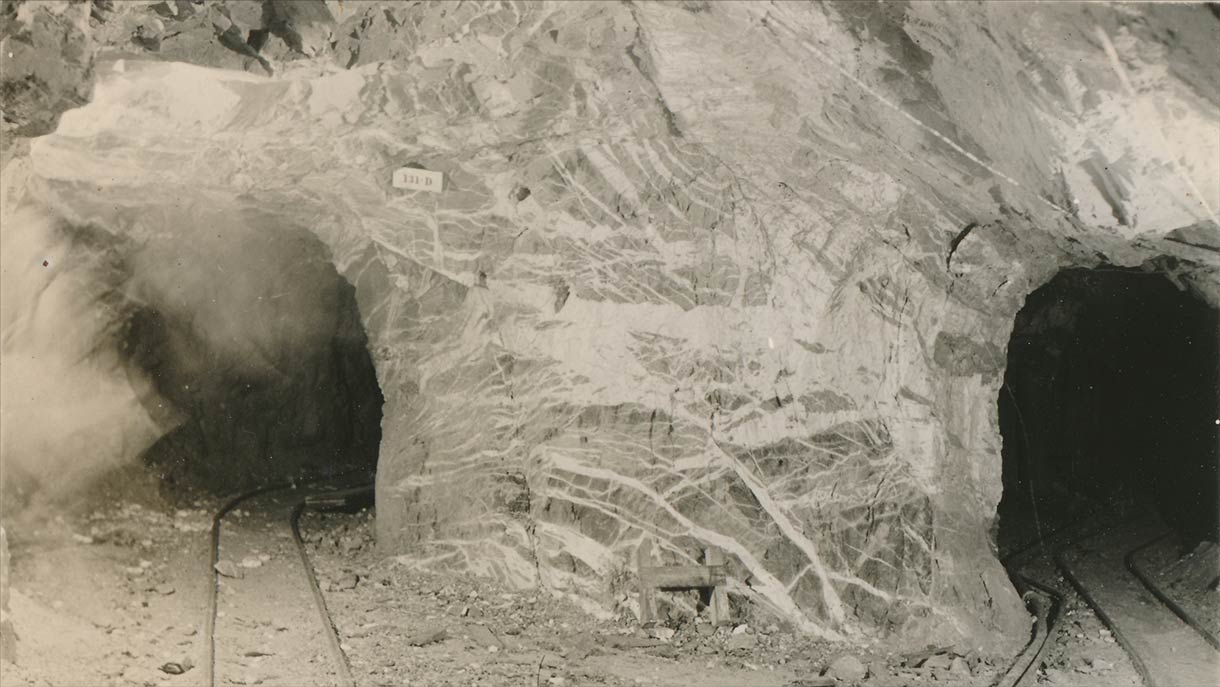I-M Project History
A Legendary Mine
The Idaho-Maryland was once California’s greatest gold mine by annual production and the largest employer in Nevada County. The mine was closed in World War II so that its human resources could be used to assist in America’s victory. The mine opened for a short period after the war but was again called to sacrifice due the Bretton Woods Agreement, designed to stabilize the post war world economy and rebuild Europe. The fixed the price of gold at $35 per oz made the mining of American gold unprofitable. After nearly a century of operation and an immense contribution to the economy, through the production of 2.4 million oz of gold, the mine was closed in 1956.1
Download Historic Newspaper Articles
HISTORIC GOLD PRODUCTION1
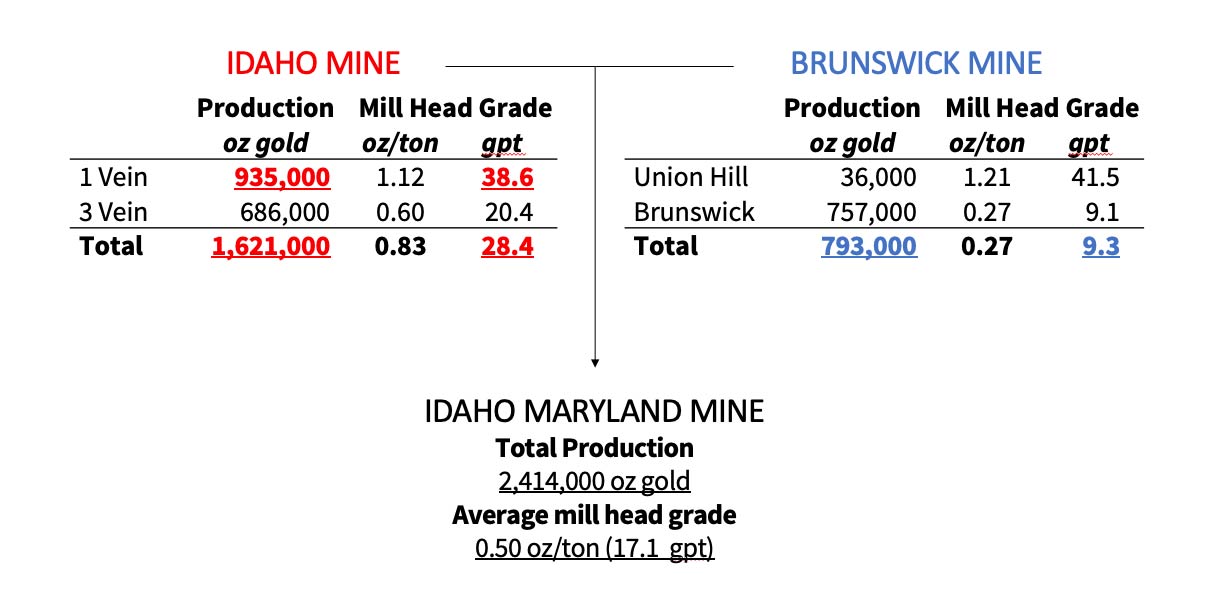
References
1) AMEC Foster Wheeler Americas Limited. Technical Report on the Idaho-Maryland Project. June 2017.
